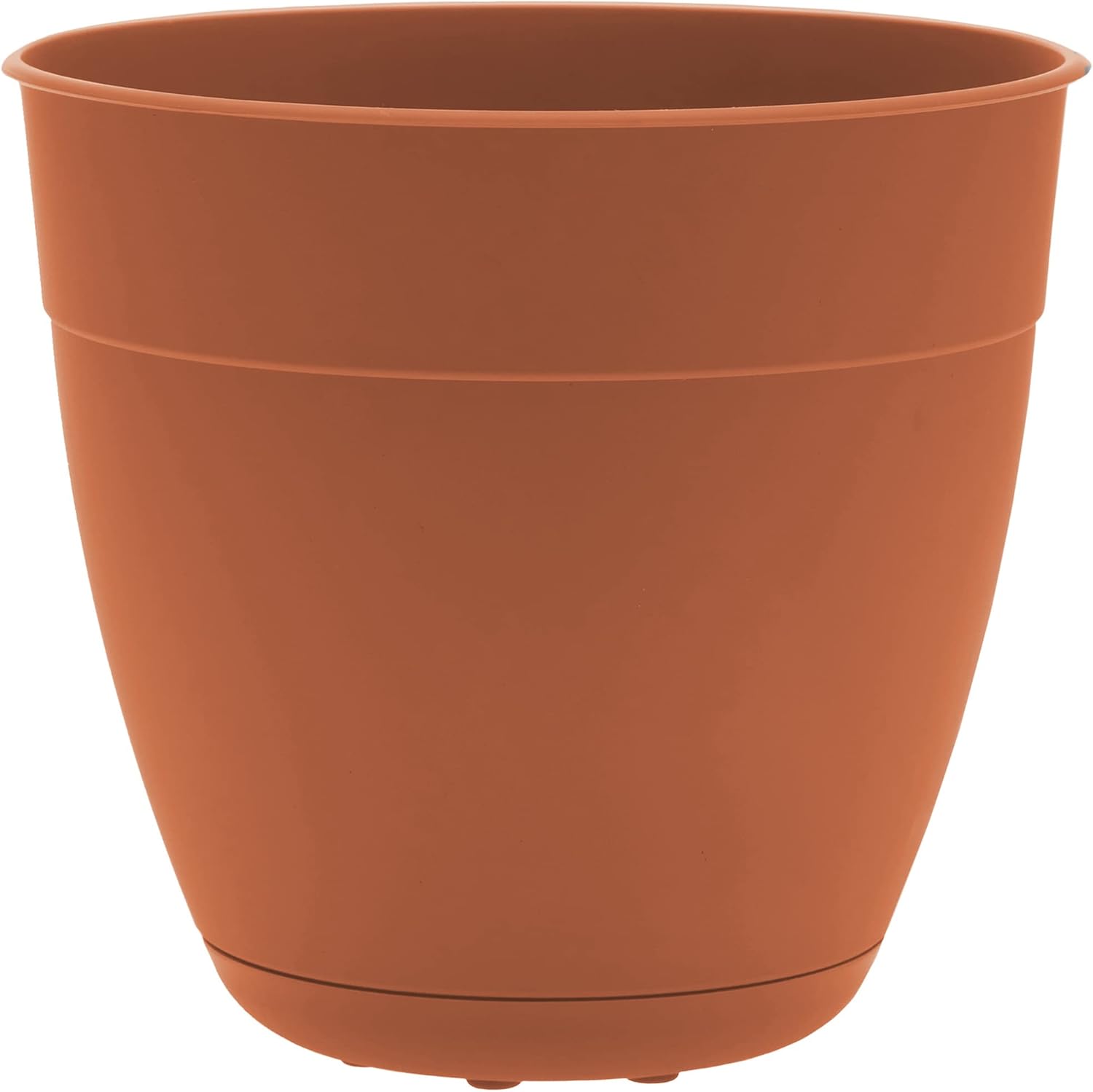If you’ve ever killed a houseplant from overwatering, you know the struggle is real. The secret to keeping your indoor plants alive? Proper drainage. Without it, water pools at the bottom of your pot, creating a soggy mess that suffocates roots and invites root rot.
In this guide, we’ll explore what makes a great indoor plant pot and share our top recommendations to help your plants thrive.
If you’re new to plant care, you might also want to check out our guide to the easiest indoor plants for beginners to start with forgiving plants while you learn.
Why Drainage Matters for Indoor Plants
Think of your plant’s roots like lungs — they need oxygen to survive. When water sits at the bottom of a pot without drainage holes, it creates an anaerobic environment where roots literally drown. This is the #1 cause of houseplant death.
Good drainage allows:
- Oxygen flow to the roots
- Excess water removal to prevent root rot
- Proper soil aeration for healthy growth
- Salt buildup prevention from fertilizers
What Makes a Good Indoor Pot
The perfect indoor plant pot should have:
✅ Drainage holes (at least one, preferably multiple) ✅ Proper size (1-2 inches larger than the root ball) ✅ Material that breathes (ceramic, terracotta, or breathable plastic) ✅ Saucer or tray to catch excess water ✅ Stable base to prevent tipping
Top 3 Pot Types for Indoor Plants
1. Ceramic Pots
Ceramic pots are the gold standard for indoor plants. They’re porous, allowing air and moisture to pass through the walls, which helps prevent overwatering. Plus, they come in endless colors and styles to match your decor.
Best for: Most houseplants, especially those that prefer slightly dry conditions
2. Terracotta Pots
The classic choice! Terracotta is naturally porous and wicks moisture away from the soil, making it perfect for plants that hate wet feet (like succulents and cacti).
Best for: Succulents, cacti, herbs, and plants that prefer dry soil
3. Plastic Pots with Drainage
Modern plastic pots have come a long way. Look for ones with multiple drainage holes and a built-in saucer. They’re lightweight, affordable, and great for hanging plants.
Best for: Hanging plants, large specimens, and budget-conscious gardeners
How to Pick the Right Pot Size
Small plants (4-6"): Choose a pot 1-2 inches larger in diameter Medium plants (6-8"): Go 2-3 inches larger Large plants (8"+): Select a pot 3-4 inches larger
Pro tip: It’s better to slightly underpot than overpot. Too much soil around small roots stays wet too long.
For plants that are particularly sensitive to overwatering (like snake plants), the right soil is just as important as the right pot. Check out our guide to the best soil for snake plants for soil recommendations that work with any pot.
Our Top Amazon Recommendations
1. Bloem Terra Cotta Clay Pots

Why we love it: These classic terracotta pots are perfect for beginners. The natural clay material helps regulate moisture, and the drainage hole prevents overwatering. They’re also affordable and come in multiple sizes.
Perfect for: Succulents, herbs, and most houseplants
🌿 Shop Terracotta Pots on Amazon2. La Jolíe Muse Ceramic Plant Pots
Why we love it: These modern ceramic pots feature a sleek design with proper drainage holes and matching saucers. The neutral colors work with any decor style, and the quality is excellent for the price.
Perfect for: Living room plants, office decor, and gift-giving
🏺 View Ceramic Pots on Amazon3. Mkono Plastic Planters with Drainage
Why we love it: These lightweight plastic pots are perfect for hanging plants or large specimens. They include drainage holes and matching saucers, plus they’re budget-friendly for multiple plants.
Perfect for: Hanging plants, large houseplants, and outdoor use
💡 Shop Plastic Planters on AmazonFrequently Asked Questions
Q: Can I use a pot without drainage holes? A: While you can, it’s not recommended. If you must use a pot without holes, add a thick layer of gravel at the bottom and water very carefully.
Q: How often should I repot my plants? A: Most plants need repotting every 1-2 years, or when roots start growing out of the drainage holes.
Q: Should I put rocks in the bottom of my pot? A: No! This is a common myth. Rocks actually make drainage worse by raising the water table. Just use good potting soil.
Q: What size pot should I start with for a new plant? A: Choose a pot that’s 1-2 inches larger in diameter than the nursery pot your plant came in.
Q: How often should I water plants in different types of pots? A: Terracotta pots dry out faster than plastic or ceramic, so plants in terracotta may need more frequent watering. For specific watering advice, see our ZZ plant watering guide for a great example of proper watering techniques.
Final Thoughts
The right pot can make all the difference in your plant’s health and happiness. Remember: drainage is king, size matters, and quality materials pay off in the long run. Start with one of our recommended pots above, and you’ll be well on your way to becoming a plant parent pro!
If you’re looking for even more convenience, consider self-watering pots! Check out our guide to the best self-watering pots for options that make plant care even easier.
Happy planting! 🌱